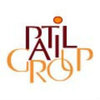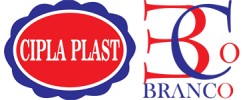Filter interviews by
R K Electronics Interview Questions and Answers
Be the first one to contribute and help others!
Interview questions from similar companies

I applied via Recruitment Consulltant and was interviewed in Oct 2024. There was 1 interview round.
(5 Questions)
- Q1. Salary expectations
- Q2. Years of experience
- Q3. Thirty thousand per month
- Q4. Please be ready to do DSA works ... Message by DSA - FOUNDER
- Q5. Please be ready to join DSA loan works by informing to your near by Bank
Interview Preparation Tips
- Look the meaning of DSA

(5 Questions)
- Q1. Salary why not time being paid ?
- Q2. Without any evidence how blaming staff ??
- Ans.
Blaming staff without evidence is unprofessional and can damage morale and trust within the team.
Avoid jumping to conclusions without concrete evidence
Encourage open communication and transparency
Focus on problem-solving rather than assigning blame
Provide constructive feedback and support to help staff improve
Lead by example and take responsibility for mistakes
- Q3. Company always carried out theft staff ?
- Q4. No one professional staff in office and overall company ??
- Q5. Why directors board unseen to thefts??
- Ans.
Directors may not always be aware of thefts due to lack of oversight, trust in employees, or focus on other priorities.
Directors may not be directly involved in day-to-day operations where thefts occur
There may be a lack of proper oversight or monitoring mechanisms in place
Directors may trust their employees and not suspect them of theft
Directors may be focused on other strategic priorities and not pay attention to pot
Interview Preparation Tips
Hr team non capable and non educated people

Consultant Sales Engineer Interview Questions & Answers
Keyenceposted on 14 Nov 2024
I applied via Campus Placement and was interviewed in Oct 2024. There were 5 interview rounds.
Total 25 questions in 30 min
GD is on social effect
(1 Question)
- Q1. 1 min talk on a specific given topic
(1 Question)
- Q1. Some technical questions as am from Entc bg...try to clear your own technical clear ... nothing extra
(1 Question)
- Q1. All about HR QUESTIONS

I applied via Walk-in and was interviewed in Nov 2024. There was 1 interview round.
(2 Questions)
- Q1. About product development
- Q2. Sampling process

(2 Questions)
- Q1. Tell me about yourself
- Ans.
I am a dedicated and experienced waiter with a passion for providing excellent customer service.
I have worked in the hospitality industry for 5+ years
I am knowledgeable about different types of cuisine and wine pairings
I excel in fast-paced environments and have strong communication skills
- Q2. Why did you apply for this job
- Ans.
I applied for this job because of my passion for providing excellent customer service and my experience in the hospitality industry.
Passion for providing excellent customer service
Experience in the hospitality industry
Desire to work in a fast-paced environment
Interview Preparation Tips

I applied via Naukri.com and was interviewed in Jul 2024. There was 1 interview round.
(2 Questions)
- Q1. Explain production planning in brief.
- Ans.
Production planning involves creating a detailed plan of how to efficiently produce goods or services to meet demand.
Forecasting demand to determine production needs
Scheduling production processes and resources
Optimizing production efficiency and minimizing costs
Balancing inventory levels to meet customer demand
Adjusting plans based on changes in demand or supply
- Q2. What is productivity?
- Ans.
Productivity is the measure of efficiency in completing tasks or producing goods.
Productivity is the ratio of output to input in a specific period of time.
It can be measured by dividing the total output by the total input.
Examples include the number of units produced per hour, the amount of work completed in a day, or the revenue generated per employee.
Improving productivity often involves optimizing processes, reducin

Software Engineer Interview Questions & Answers
National Instrumentsposted on 20 Nov 2024
I applied via Naukri.com and was interviewed in May 2024. There were 2 interview rounds.
(2 Questions)
- Q1. About my current company
- Q2. About the work I do in my current company
Coding round where they ask few coding questions

I applied via Naukri.com and was interviewed in Feb 2024. There were 6 interview rounds.
Graduated phamrmacy aptitude test
Antibacterial activity cheak of thriphala diffusion method
Emergency case study
Production tablet in coding
Work simple with group discussion
(7 Questions)
- Q1. I wanna hr in pharmacist industry
- Q2. My strength my weakness
- Q3. Opportunity of faithful
- Q4. Honestly work in componies
- Q5. Right regularity athority .
- Q6. Honestly work in pharmacists
- Q7. Confidently work start.
Interview Preparation Tips
- Industrial qc
- Industrial regularleity affair
- Industrial research
- Pharmacist
- Pharmacutical production
- Despensing
- Gernal ward
- Assistan of surgeon
- Microbiologist
- Analytical Chemistry
Electronics Engineer Interview Questions & Answers
Ambetronics Engineersposted on 3 Feb 2024
I applied via Company Website and was interviewed in Jan 2024. There were 2 interview rounds.
Resistor colour codes and FET,Transister
(5 Questions)
- Q1. On Colour codes
- Q2. Colour code pf 10k resistor
- Q3. Voltage devider rule
- Ans.
The voltage divider rule is used to calculate the voltage across a resistor in a series circuit.
The voltage divider rule states that the voltage across a resistor in a series circuit is proportional to its resistance.
The formula for the voltage divider rule is Vout = Vin * (R2 / (R1 + R2)), where Vout is the voltage across R2, Vin is the input voltage, R1 is the resistance before R2, and R2 is the resistance across whi...
- Q4. Ohms law in detail and formula
- Ans.
Ohm's law states that the current flowing through a conductor is directly proportional to the voltage applied across it and inversely proportional to its resistance.
Ohm's law is expressed by the formula: V = I * R, where V is the voltage, I is the current, and R is the resistance.
The law was named after the German physicist Georg Simon Ohm, who first formulated it in 1827.
Ohm's law is fundamental in understanding and a...
- Q5. What is FET,Give difference FET and transister
- Ans.
FET stands for Field-Effect Transistor. It is a type of transistor that uses an electric field to control the flow of current.
FET is a three-terminal device used for amplification and switching of electronic signals.
It has a high input impedance and low output impedance.
FETs are classified into two types: JFET (Junction Field-Effect Transistor) and MOSFET (Metal-Oxide-Semiconductor Field-Effect Transistor).
The main dif...

Assistant Manager Interview Questions & Answers
SIAC SKH India Cabs Manufacturingposted on 21 Sep 2024
(1 Question)
- Q1. Technical discussion about product you worked on
Interview Preparation Tips
Tell us how to improve this page.
Interview Questions for Popular Designations
- Design Engineer Interview Questions
- Senior Engineer Interview Questions
- Sales Executive Interview Questions
- Graduate Engineer Trainee (Get) Interview Questions
- Accountant Interview Questions
- Test Engineer Interview Questions
- Data Analyst Interview Questions
- Senior Software Engineer Interview Questions
- Show more
Interview Questions from Similar Companies
R K Electronics Reviews and Ratings
based on 5 reviews
Rating in categories
|
Sales Head
4
salaries
| ₹30 L/yr - ₹40 L/yr |
|
Accountant
3
salaries
| ₹1.2 L/yr - ₹2.4 L/yr |

Easyday Club

SIAC SKH India Cabs Manufacturing

Hitachi Home & Life Solutions

Krishidhan Seeds
Calculate your in-hand salary
- Home >
- Interviews >
- R K Electronics Interview Questions

